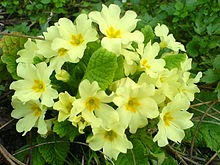We all sigh over star-crossed lovers. Romeo and Juliet, Abelard and Heloise, Heathcliff and Cathy, all destined to be apart. At least, they may be in literature, but not necessarily horticulturally. I have already mentioned the piece of our garden given over to plants with literary references such as Euphorbia
Humpty Dumpty (I didn't say they were always highbrow), and this year we thought that we might change the course of literary history. We decided to thwart Emily Bronte and grow
Heathcliff and
Cathy sweet peas, planting them to entwine together, scrambling up a sweet pea wigwam. Desperate all-consuming passion would be converted into sweet smelling bluey-purple and white blooms.
Happily, we planted our sweet pea seeds individually into root trainers (you did read "
Still time for sweet peas", didn't you?), and smugly sat back ready to wipe the smile from Bronte's face. Eight weeks later, how are we faring?
Twenty four seeds of each were planted. Here are the
Heathcliff seedlings. A success rate of possibly sixty percent or so, which is not brilliant but is reasonable for a relative newbie. And the
Cathy? Look closely, when you count.
 |
| Sweet Pea Heathcliff |
 |
| Sweet Pea Cathy |
Yup. Two. If you include the rather diddy runt that is just poking up from the corner of one of the cells. Pathetic! Just over a five percent success rate! I realise that Cathy died young, but these haven't even been born! Heathcliff and Cathy are not destined to be together in a Hurst Green garden this year - or at least, at a ratio of about 7 to 1, not in any way that wouldn't raise some Surrey eyebrows. We did plant some seeds named for my wife, Jilly, and this places me into a quandary - do I really want Heathcliff and Jilly to be together instead? Especially since she is, apparently, rather more of a Mr Darcy woman, and doesn't really like Heathcliff anyway. Round one to Emily Bronte!
So, where did it all go wrong? In truth, we have no idea. The packet told us not to soak or chip the seed, and these instructions were obeyed to the letter. They went into a propagator with the other seeds such as
Perfumed Delight and
Snoopea, which have all had at least a 60 percent success rate. Perhaps Sweet Pea
Cathy is just difficult to germinate - after all, it is not commonly sold in garden centres, who only tend to stock the easiest all-rounders, and we had to send away for them. (Incidentally, we also had to send away for
Jilly, despite it being listed as one of the best exhibition scented sweet peas in existence - garden centres, what are you doing?). We shall give Cathy a try again next year, only this time we will soak them in advance. If we have no luck again, Cathy and Heathcliff will just have to go back to wandering the Yorkshire moors!













